|
|
The Minnesota State Parks and Trails Fall Color Update newsletter is sent Thursday mornings in September through October of the leaf peeping season.
Compare Three Years of Minnesota Fall Colors
Curious what fall color's progress was on any given date, year versus year? So were we! So we built a handy comparison tool using map data going back to 2013. Check out the tool on our Fall Color website.
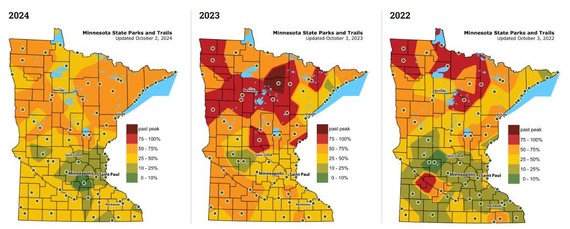
|
|
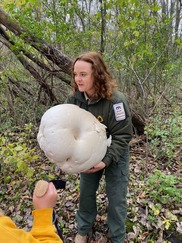
MEA weekend is fast approaching! Minneopa State Park interpretive naturalist, Kelsey Moe has the perfect outdoor activity to try with your kiddos during the break.
But first, we couldn't just show you a picture of Kelsey holding a giant mushroom and not tell you about it. Kelsey herself explains, "Meet the giant puffball mushroom (Calvatia gigantea)—nature’s fluffy balloon of the fall! This round, white wonder can grow as big as a basketball and resembles a marshmallow cloud nestled in the woods and fields of Minnesota. With its smooth surface and spongy inside, it’s a delightful find for adventurous foragers. Keep your eyes out for what appears to be lost volleyballs or soccer balls while out in the state parks, it might turn out to be this friendly fungus instead!"
📷: Kelsey holds a puffball mushroom at Fort Ridgley State Park during a Fall Colors Hike with visitors.
|
|
|
|
Fall is a great time for people to get outside and witness a breathtaking transformation of colors our trees turn, from rich purples to bright reds, rusty oranges, and golden yellows. Many may wonder where these colors come from and why we can only see them in the fall. This family-friendly science experiment will reveal the secret magic of fall colors and even create fun art to share with others. Here are the steps to do this at home!
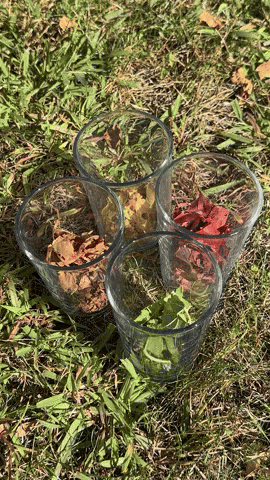
Collect leaves
Head outside and collect fall leaves. Try different species of trees and even leaves from the same tree that are at different stages of their color transformation.
Set up Your Experiment
Set out one jar for each color of leaf collected. Shred each type of leaf and place in jars, the finer and smaller the leaf pieces, the better the results.
Add Alcohol and Mash
Add enough rubbing alcohol to cover the leaves and use a utensil to mash up the leaves in the jars. The solution will begin to change colors.
Heat the Jars
Put the jars in a large dish or bowl. Add hot water to the dish or bowl and cover the jars with lids or plastic wrap.
Wait
Let the jars sit for an hour. Occasionally give the jars a swish, the solution will start to turn green. Refresh the hot water if it cools.
Add the Filter Paper
Cut a coffee filter into strips and place on a plate. Using a teaspoon or dropper add a couple of drops of the liquid to the tip of the filter. You can also place the tip of the coffee filters into the solution.
Wait
Wait approximately 30 min to an hour to watch as the colors move up the paper and separate. Once dry, use them in a variety of nature-inspired arts n’ crafts!
The magic of leaves and their colors lies in the unique way that plants collect energy from the sun through photosynthesis using chlorophyll. Chlorophyll is a green-colored compound and during the summer plants produce so much of it in their leaves that it hides the real colors of the leaf underneath! In the fall, the daylight hours shorten, and plants stop producing chlorophyll which begins to break down in the leaves. This allows the colors that were always there to finally show through the dominant green of chlorophyll! Each tree species has its own special colors that paint our landscapes each fall.
|
 Unbe-Leaf-able Fun: Learn About Leaves This Fall!
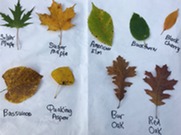
As the leaves turn and fall to the ground, it’s a great opportunity to get up close and learn about them! Grab a handful of leaf litter during your next adventure and take a closer look. What do you see? Is the leaf alone on its stem, or does it have a pair or more (known as compound leaves)? Are the edges smooth or serrated? Great job—you’re becoming a leaf identification pro!
Do you have little explorers in grades K-4? We’ve got “Looking at Leaves” activity handouts ready for your next visit to a Minnesota state park or trail. Challenge your family to find and identify all the different leaves on our worksheets! It’s a fun way to enjoy the season and learn something new together.
|
|
|
 Elevated Wildfire Danger 🚩
|
High winds and low humidity are causing elevated wildfire danger across Minnesota. If you have an upcoming visit to a Minnesota state park or recreation area planned, check the fire danger website to review current alerts. Thank you for your vigilance and care in protecting our state’s natural resources. Please continue to use extra caution while having campfires and always practice fire safety!
|
|
|
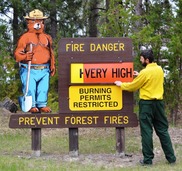 |
|
|
 Crow Wing State Park
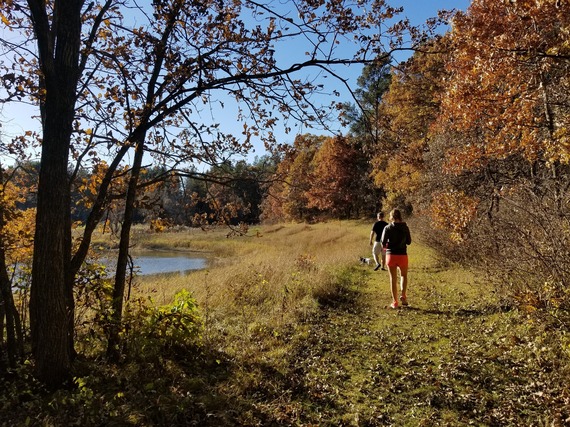 📷: Amy Ellison, Crow Wing State Park - taken 10/18/18
If you like your fall color blended with dose of state history, Crow Wing State Park is your destination. Located at the confluence of the Mississippi and Crow Wing rivers in east central Minnesota, the park boundaries contain two historic districts on the National Register of Historic Places. That means you can climb the steps to the popular Chippewa Outlook for a stunning fall color view of the Mississippi River, and then visit the Old Crow Wing Town Site and the Red River Oxcart Trail for a fascinating look at the state’s past.

First, the fall color. The park is made up of three of the state’s natural landscapes: pine, prairie and hardwood. That means a bike ride or hike on the 6.2-mile paved portion of the Paul Bunyan State Trail will take you past pine trees, prairie grass, the mighty Mississippi River, sumac, maple trees, and lots of oak. The more ambitious among you might continue on the Paul Bunyan State Trail that originates at Crow Wing State Park and continues to Lake Bemidji State Park, 115 miles away. Or bikers may choose to follow the trail past the park boundary to Baxter and Brainerd. For an off the beaten path destination, go south from the picnic shelter to the shores of the Mississippi where you’ll take in lovely, serene river views. You may decide that your next visit will include a ride in a canoe.
|
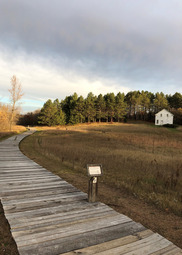
Next, check out the site of the Old Crow Wing Village which was once a bustling 1800s community. The well-known Woods Trail once served ox cart traffic carrying supplies between St. Paul and the Red River settlements. Note the Beaulieu House, one of the state’s oldest homes, and watch for interpretive signs and displays that explain parts of the past. The area was the site of fierce1700s battles between the Ojibwe and Dakota, a stark contrast with today’s serenity.
Crow Wing State Park was established in 1959 for its historic significance. Area residents then had the sense to preserve the site so it would continue to tell its stories for generations yet unborn. This year, come for the color, and stay for the stories. They belong to you because the history of Minnesota belongs to everyone.
|
|
|
|
If this email was forwarded to you, sign up so you too can follow the colors
Explore past issues.
|
|
|
|